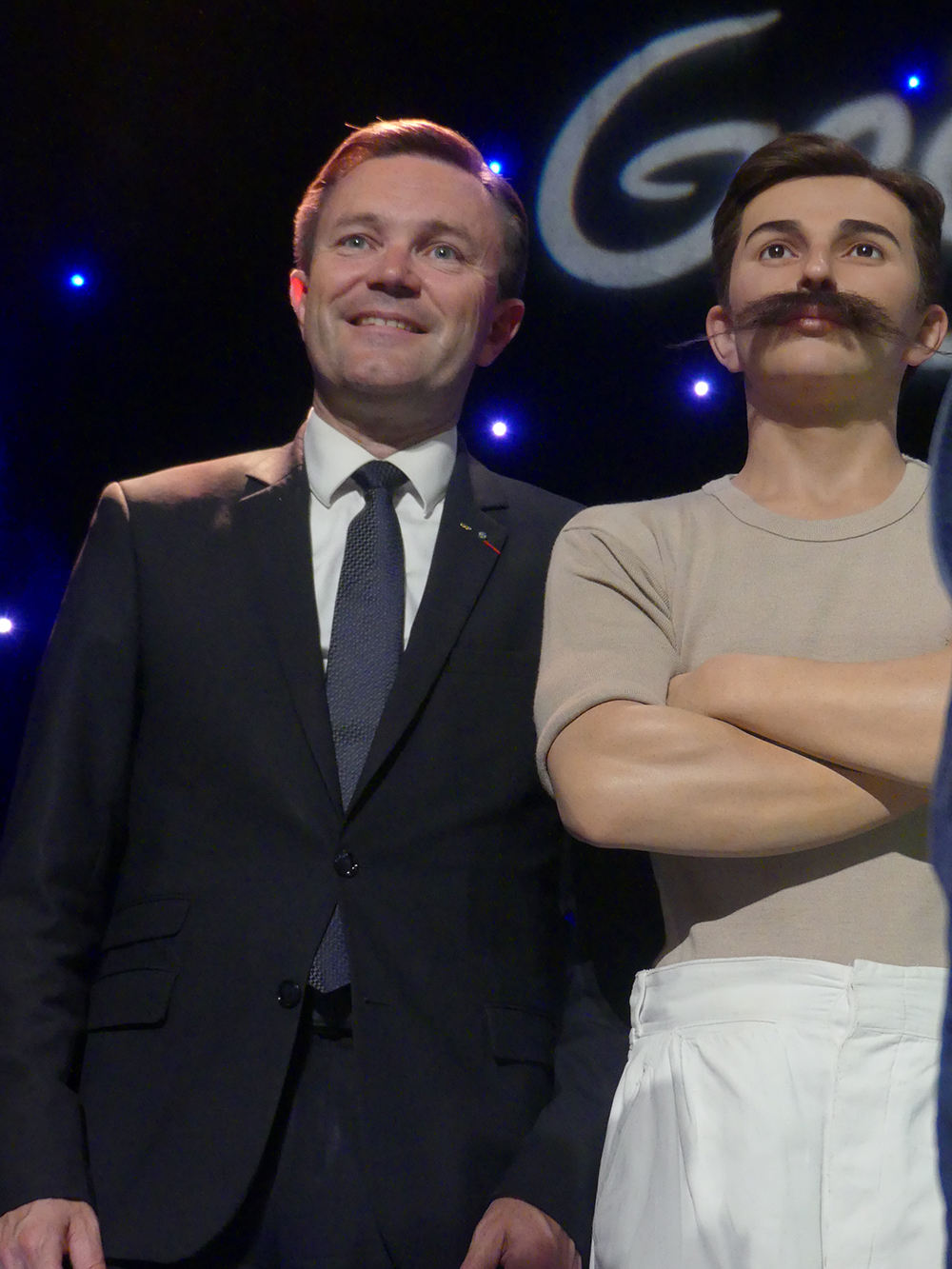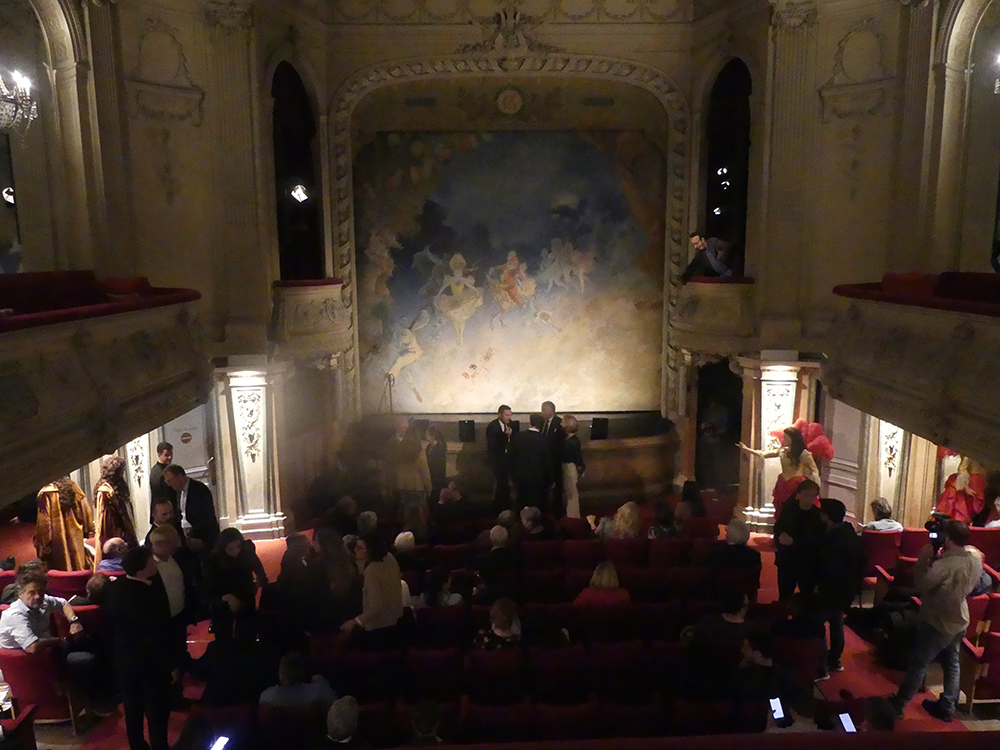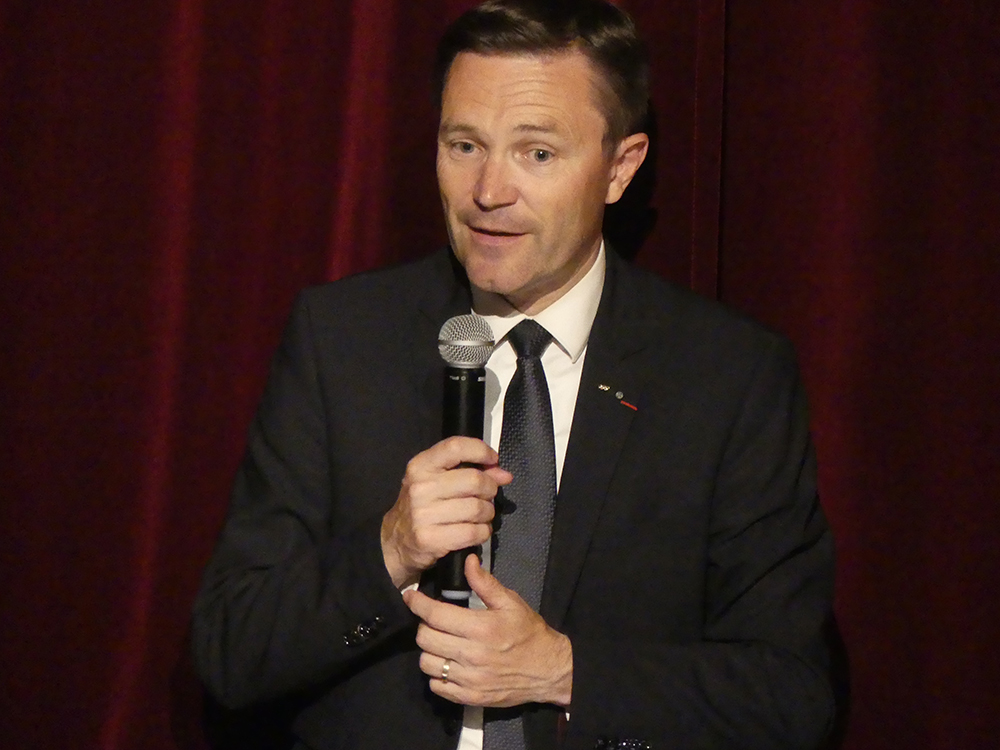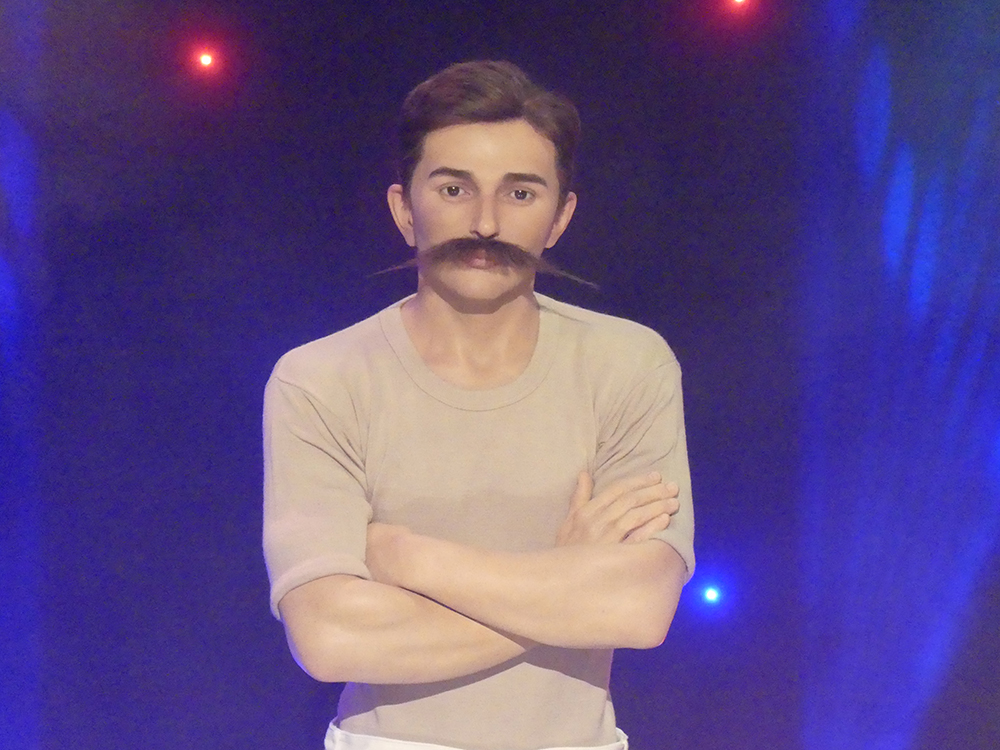Cerermony - Grévin Museum: A striking tribute to Pierre de Coubertin
By Mulder, Paris, Musée Grévin, 18 june 0002 to 18 june 2024

The evening of June 18, 2024 marked a historic turning point at the Grévin Museum, with the induction of Pierre de Coubertin, the father of the modern Olympic Games, into this prestigious gallery of iconic figures. The event brought together influential figures from the worlds of sport and culture to celebrate the legacy and lasting impact of this visionary man.
As early as 8 p.m., guests began pouring into the Grévin Museum, located on the Grands Boulevards in Paris. Among them, notable figures such as Véronique Berecz, Head of External Relations, and Yves Delhommeau, General Manager of the Grévin Museum, welcomed guests with great hospitality. Alexandra de Nacavelle de Coubertin, great-grandniece of Pierre de Coubertin and member of the Association Familiale Pierre de Coubertin, honored the event with her presence, adding a personal and emotional dimension to the ceremony.

The sculptor Claus Velte, who created the wax statue of Coubertin, was also present. David Lappartient, President of the Union Cycliste Internationale, President of the Morbihan département and President of the Comité National Olympique et Sportif Français, also joined the event, underlining the importance of this tribute in this year when Paris is preparing to host the 2024 Summer Olympics.
The most eagerly awaited moment of the evening was the unveiling of the wax statue of Pierre de Coubertin. Representing Coubertin at the age of 31, this work of art was painstakingly sculpted from a single photograph, under the careful guidance of the Association Familiale Pierre de Coubertin. The project took six months to complete, illustrating the precision and dedication required to capture the essence of this visionary man.

Pierre de Coubertin (1863-1937) is widely credited with reintroducing the Olympic Games in 1896, inspired by the ancient Greek tradition. His ambition was not limited to simply reintroducing this prestigious sporting event, but also instilled values of excellence, friendship and respect that endure to this day. The modern Olympic Games, held for the first time in Athens, marked the beginning of a new era in international sporting competition.
Pierre de Coubertin's contributions to the world of sport and education are monumental. Over 600 sites in France and 40 worldwide bear his name, testifying to his considerable influence. His wax figure at the Grévin Museum, an institution renowned for its lifelike representations, underlines the lasting impact he had on the world.

Since its inception, the Grévin Museum has celebrated the giants of sport. From the first representations of athletes such as Georges Carpentier in 1920 and Suzanne Lenglen in 1928, to modern legends such as Clarisse Agbégnénou and Martin Fourcade, the museum has showcased figures who have left an indelible mark on their respective sports. Coubertin now joins this illustrious list, underlining his essential role in shaping the Olympic movement.
Pierre de Coubertin was ahead of his time, seeing sport as a vehicle for social progress and peace. At a time when sports were essentially reserved for the elite, he championed the democratization of sporting activities. In 1906, he founded the Société pour les Sports Populaires, whose aim was to promote social integration through sport and make physical education accessible to young people from all walks of life. This initiative played a decisive role in integrating sports into schools, revitalizing physical education in France.

Pierre de Coubertin's advocacy also extended to gender equality in sport. Under his presidency, the number of female athletes increased six-fold, demonstrating his commitment to integration. Inspired by Anglo-Saxon models, he also played an important role in the development of secular scouting, creating opportunities for young people to engage in outdoor activities.
Perhaps one of Pierre de Coubertin's most enduring contributions was the design of the Olympic rings, five interlaced rings representing the unity of the five continents. This symbol has become synonymous with the Olympic Games, embodying the spirit of solidarity and competition on a global scale. Coubertin's pacifist ideals were also evident in his decision to establish the headquarters of the International Olympic Committee in neutral Switzerland, underlining his belief in the unifying power of sport.

Since its opening in 1882 on the Grands Boulevards in Paris, the Grévin Museum has been a place of culture and entertainment. Attracting over 900,000 visitors a year, the museum is renowned for its dynamic, interactive exhibits. The wax figure of Coubertin will join a host of other notable personalities, from athletes like Teddy Riner and Martin Fourcade to cultural icons like Guillaume Apollinaire and Marcel Proust.
The museum is constantly evolving to remain relevant and attractive, offering visitors a unique and immersive experience. Recent additions include contemporary star figures such as Antoine Griezmann, Audrey Fleurot, and even the beloved Pat'Patrouille characters. This mix of historical and modern figures ensures that the Grévin Museum remains a must-see destination in Paris.

The unveiling of Pierre de Coubertin's wax figure is a timely celebration of his visionary work, as Paris prepares to host the 2024 Olympic Games. Coubertin's ideals and contributions laid the foundations for what has become one of the world's most prestigious sporting events. His presence at the Grévin Museum not only honors his legacy, it also inspires future generations to uphold the values of the Olympic movement.
On this memorable evening, the Grévin Museum not only honored Pierre de Coubertin's legacy, but also celebrated the ideals he promoted. Guests left with a sense of gratitude and admiration for the man whose vision continues to shape the world of sport and education. Coubertin's wax statue will remain a constant reminder of his lasting impact and the importance of Olympic values in our society.
You can discover our selection of photos in our Flickr page
Photos and Video : Boris Colletier / Mulderville

